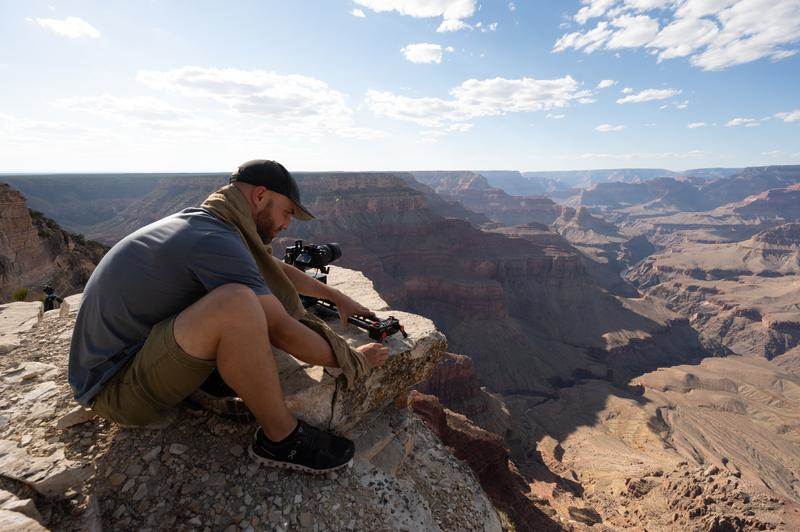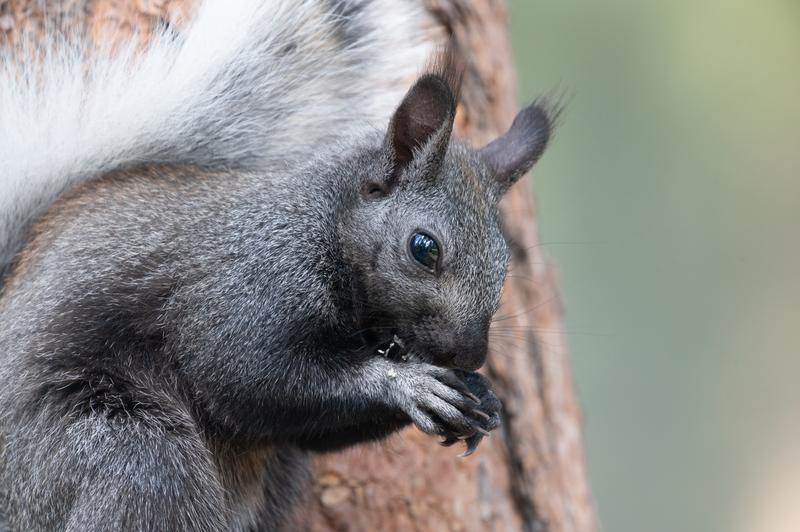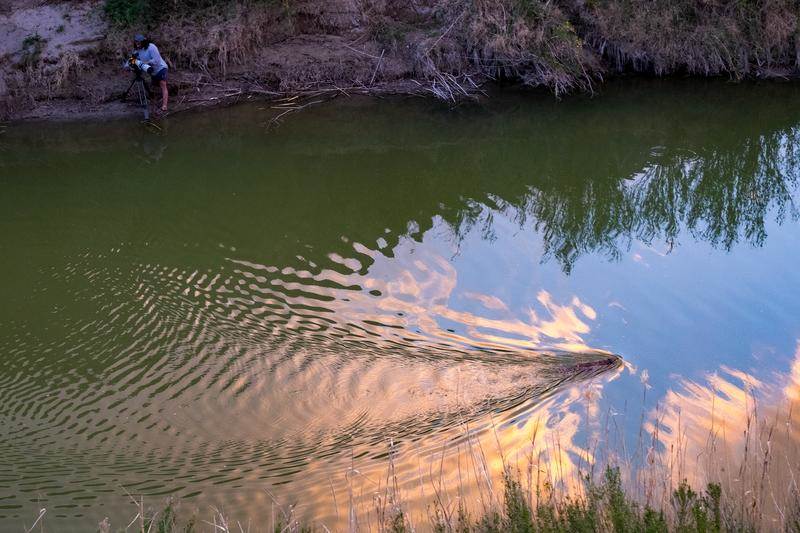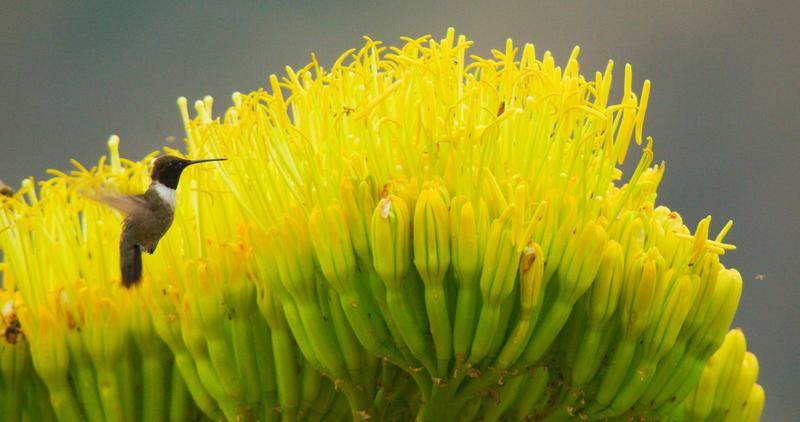Interview with Anwar Mamon, Executive Producer of National Geographic’s “America’s National Parks”
National Geographic’s week-long television event America’s National Parks has at long last arrived, with episodes debuting nightly at 9/8c and the entire series streaming on Disney+ beginning August 31st. In advance of the series’ debut, I had the chance to interview Executive Producer Anwar Mamon about the vision for the project, working with narrator and fellow EP Garth Brooks, the unavoidable topic of climate change, and more. Anwar’s previous credits include Story of Cats (PBS), Grizzly Bear Cubs & Me (BBC), Primal Survivor (National Geographic), and Life at the Waterhole (BBC and PBS). Enjoy this look behind the lens at the making of this new documentary series and scroll to the bottom of this post for the full video interview.

Camera Operator filming over the rim of the Grand Canyon. (National Geographic/Taylor Gray)
Alex: How did you first get involved with this project?
Anwar Mamon: I got involved because I work at the production company Wildstar Films, we're based in Bristol, and Bristol in the UK is the global hub, they call it Green Hollywood of wildlife filmmaking. And we're all very lucky and fortunate in this career that that means we get to make incredible shows like this, and we get to visit incredibly beautiful wild places, and hopefully tell their stories. And so I was very fortunate to be at Wildstar Films when this came about, and I think it was just an exciting opportunity to spend a long period of time in each national park and really delve into what makes them special, because I think they all have a headline. We're all familiar with Grand Canyon, but there's more to each of them than meets the eye. And so Grand Canyon is an example, I don't think many people would know that there's this beautifully lush forest with squirrels in it called the Kaibab Plateau, and it was just that, that's what excited me, that ability to actually do a deep dive and really unpack these places that people might know, but actually don't know that well.

Kaibab Squirrel looking at the camera. (National Geographic/Taylor Gray)
Alex: What was the vision for the show and did it evolve? Because it really does cover a lot more topics than I expected from a show called America's National Parks.
Anwar Mamon: I think that from the outset it was always meant to be as comprehensive as possible, and not just natural history focused, because as you say, I think most audiences would expect to see mostly natural history, and we wanted to cover the human side of things as well. It was important for us to look at what visitors might experience versus what scientists might, or if you're more adventurous, what sites you might see at the park, and so that was always part of the series, always part of the package. I think how it evolved in the edits is that we were really able to get that mix right, get that balance right between who's telling the story of these parks, is it the animal characters? Is it human stories? Is it the landscapes? And it was an exciting point to be to realize that each national park has such a unique story, protected at different times, completely different habitats, completely different species, and they're all part of this same system.
Alex: Anytime there's a documentary there's so much left on the cutting room floor. What was that process like for the directors, for the editors, to determine what's worthy of getting a spotlight in this hour that you have for each national park?
Anwar Mamon: I think if you ask the directors it's a painful process for them, and how it works is they will work with an editor, they will put together various versions of cuts, and exec producers like myself, Dan Rees, and the series producers Ben Wallis and Myles Connolly, will do various viewings to say, oh, that's working, that's not working. And to reference the previous point about getting that balance right, I think we had several edits where it weirdly was a bit too wildlife heavy, we were spending a bit too much time with the wildlife characters when they weren't really telling us more about the park. And so I think a lot of our efforts in the edit were making sure that we were telling the story about the parks, first and foremost, and we had a phrase when we were in the edits that this is a love letter to the national park, and we would keep trying to make sure that we were writing that love letter throughout.
Alex: One of the things that I really loved was the inclusion of indigenous people. It didn't gloss over the fact that before America was what it is today, there were people here, and they used this land. What were the conversations like around that? Did you work with some of the locals who are descendants of those people to make sure you got that story right?
Anwar Mamon: Yes, I think from the beginning we were very mindful of that, because I think when we talk about landscapes, these landscapes were here before humans, and then obviously early settlers would've used them in a very different way, and we wanted to tell as much of that story as we can. But we weren't a series that was delving into history, but we certainly didn't want to ignore it. And so that thread is throughout all the shows in a variety of ways, and wherever we could we worked with indigenous communities, and we try to give them a voice, because that's an important part of the national park system, and an important part of its history. And also I think for the audience it's important to understand how these aren't just beautiful places, they're not just picture postcards, that is one element, they're incredibly productive, incredibly useful, incredibly important culturally, they've got so many different sides, and it felt only right to highlight those stories.
Alex: And another story that gets told throughout is climate change. Was that a goal going into the show, or was it simply unavoidable because of what you guys were seeing?
Anwar Mamon: We want to represent what we're seeing, and I'm not a fan of just having climate change in a show by just saying it, because if it's not visual, then it feels like you're just saying it. But over the course of filming national parks for, in some cases a year and a half, it was unavoidable really, and it did impact our shoots. Our crews experienced extreme weather conditions, freak flash floods, things that would impact our animal characters, and that is in some of our stories, like Big Bend National Park, and our poor beaver that spent months building its lodge that was wiped away in a day. These were actual real life difficulties, and what we're seeing as wildlife filmmakers over the last five years is it's an increasingly common story. Where things were predictable, they're not anymore. When we arrive in dry season, it's rainy, when we arrive in rainy season, it's dry. And so the longer the project, the more relevant it is, and it was relevant in a lot of the national parks because we came up against those difficulties.

Camera operator, Austin Alvarado, filming a beaver swimming in the Terlingua Creek after the heavy flash flood had destroyed the beaver dam. (National Geographic/Patrick Thrash)
Alex: What was the timeline of the series? You mentioned spending up to potentially a year in some of these places, how long was this project in development? How many different teams did you have to scatter around to get this done on time?
Anwar Mamon: So it's a pretty long project, it had about six months or so of pre-production, a year to a year and a half of filming, of production, and then another year of editing. And in terms of teams, what was really interesting about this series was that COVID hit right in the middle of the filming period, and luckily we were already committed to using American talent, and I think when COVID hit we were in a good position and we doubled down on that strategy. And so our approach was very much to use in-country American camera ops whenever we could, and I think as well that benefited the series because many of them were locally based to the parks they were filming in. I think some of their emotional connection came through the way they filmed things and the extra care they took in their ability to be there at times when other people couldn't, and we ended up with a huge production team as a result. We had a team in Bristol who were obviously looking for stories, researching, looking at footage that came back, and then we had another production team roving the states in all the different national parks. So it was a massive team effort, and a really impressive one during what was a difficult time for everyone.
Alex: Were there any new technologies that you were able to implement on America's National Parks that fans of nature documentaries should be looking for?
Anwar Mamon: Well, we're very lucky in the time we live in, the tools are just getting better and better, and I think we used pretty much everything at our disposal on America's National Parks. Drones, remote cameras, the latest UHD cameras, various underwater systems. I think that the story that comes to mind in my head right now is in Big Bend National Park, the ability to film Mexican long-nosed bats feeding on the agave plants only happens at night, happens sporadically over the year, maybe twice a year, and we were able to capture it just by moonlight, so without disturbing the animals we were able to get intimate footage purely through low light camera technology. And it's very special footage because it tells a part of their story that's rarely seen, and it enabled us to tell a story that linked back to the park, because without the bats there wouldn't be the agave plant. Big Bend National Park would be a very, very different park, and without the agave plant there wouldn't be the bats. So I think it was a nice way to show how interconnected life is, not just within the park, but also to all the animals that migrate to and from them.

A hummingbird feeding on agave flower nectar. (National Geographic/Henry Davis)
Alex: Garth Brooks is the narrator and he also serves as an executive producer. Did his involvement have any impact on the score of the series?
Anwar Mamon: The first thing to say is Garth is amazing, so down to earth, so collaborative, and I think has elevated the series, and it's been a joy to see how excited he is. I think as soon as we heard his voice on it we all just had a feeling of, wow, this is it, somehow we've connected these things together, and his input has been truly valuable. I think his input has meant that our composers have worked harder as a result because they feel that pressure, and our aim was always to have different instrumentation across the parks, for each park to have its own sound, and I hope that comes across. But I know that the composers work very hard with that, especially when they found out that Garth was attached. So we've got in session musicians, we've really gone to town on the music to match his presence, to match his voice, and also to give the parks their own identity.
Alex: National Geographic is a worldwide brand, Disney+ is a streaming platform that's everywhere, so this is going to be seen by a wider audience than just Americans looking for a road trip destination. What is the allure of the national parks for you, being that you're based in the UK. Why are these so appealing to you as someone who's not able to just hop in a car and go if they wanted to?
Anwar Mamon: I think that the United States still has some of the most incredible landscapes and animals found anywhere else on the planet, and I think that America's National Park system is particularly special because at the time, 100 years ago when some of these parks were protected, it was amazing foresight, and the fact that they're preserved, and many of them are so iconic. I think most people around the world know about the Grand Canyon, and even in the UK there's still many things that, we're all familiar with Yosemite, and I think there's a bigger invite to a lot of the audiences because the series really does scratch beneath the surface. It really does delve into what makes these habitats unique and special. So yeah, I think it's still got an appeal, hopefully, to a broader audience, and it is family entertainment, which is also educational, so I think it's always good on a platform like Disney+ to have something that any age can sit down and enjoy, and hopefully come away connecting with the natural world and having a greater appreciation for it.
Nat Geo will broadcast each episode of America’s National Parks at 9/8c Monday, August 29th through Friday, September 3rd. Disney+ subscribers will have the ability to stream the entire series beginning Wednesday, August 31st.
